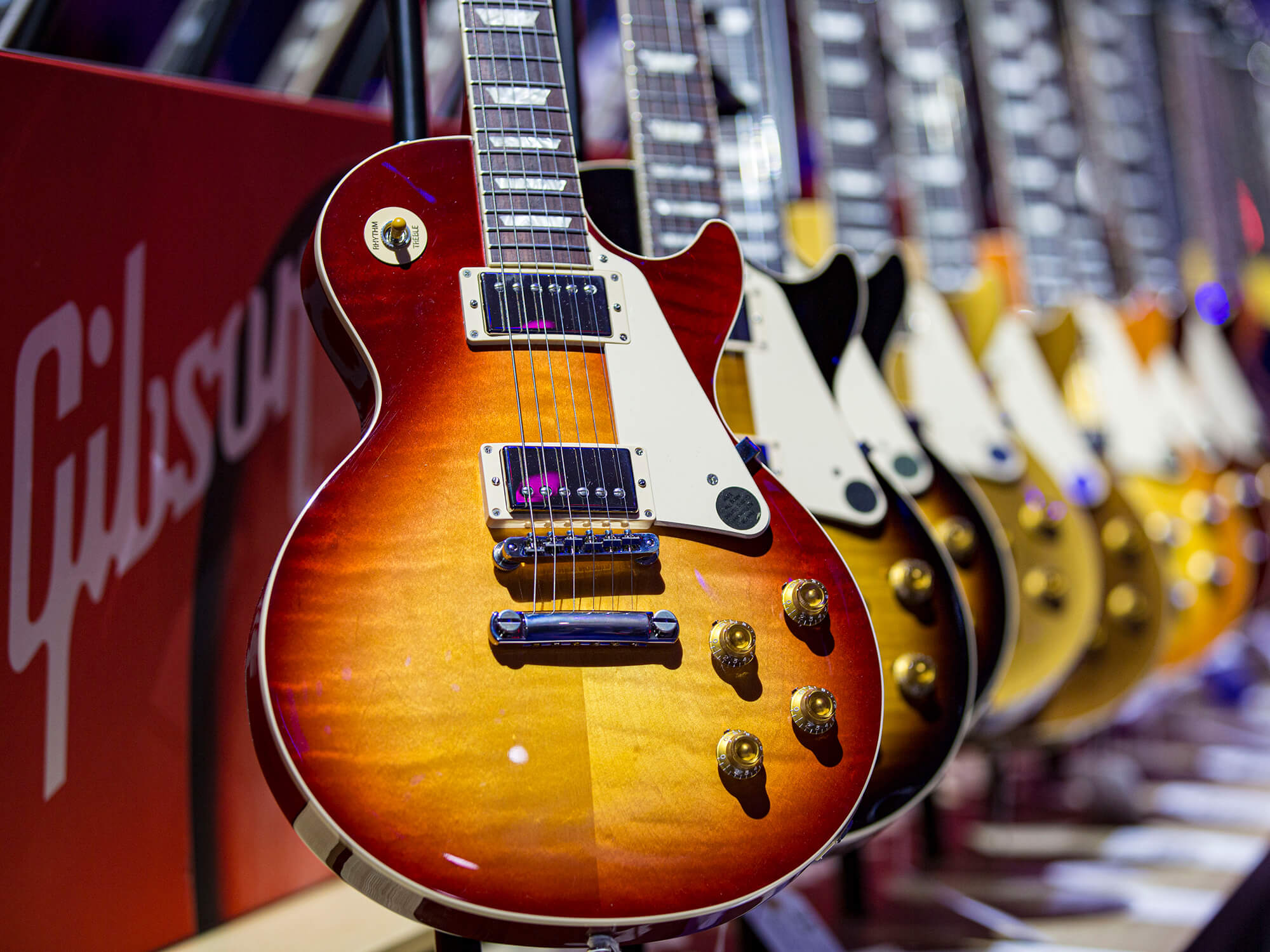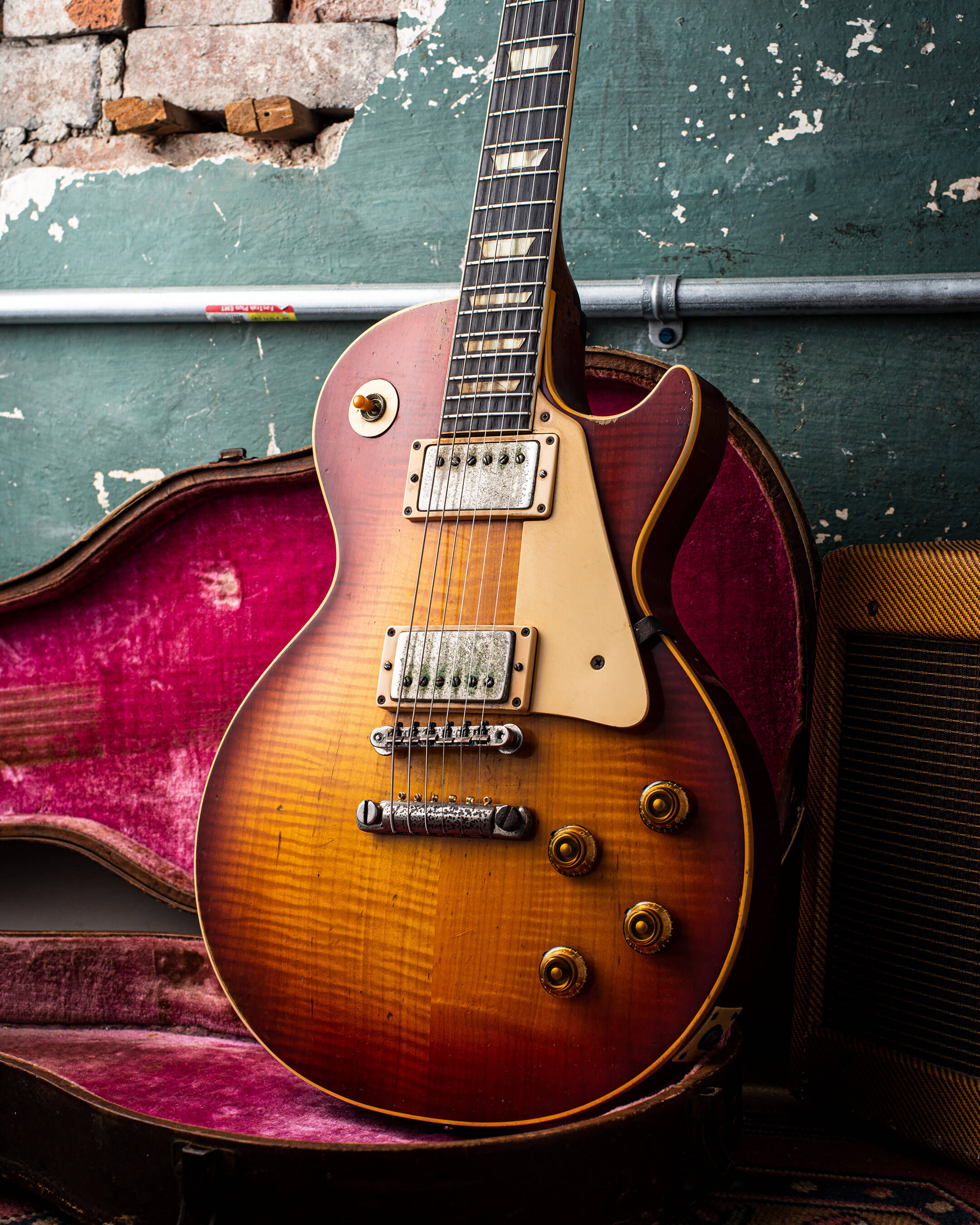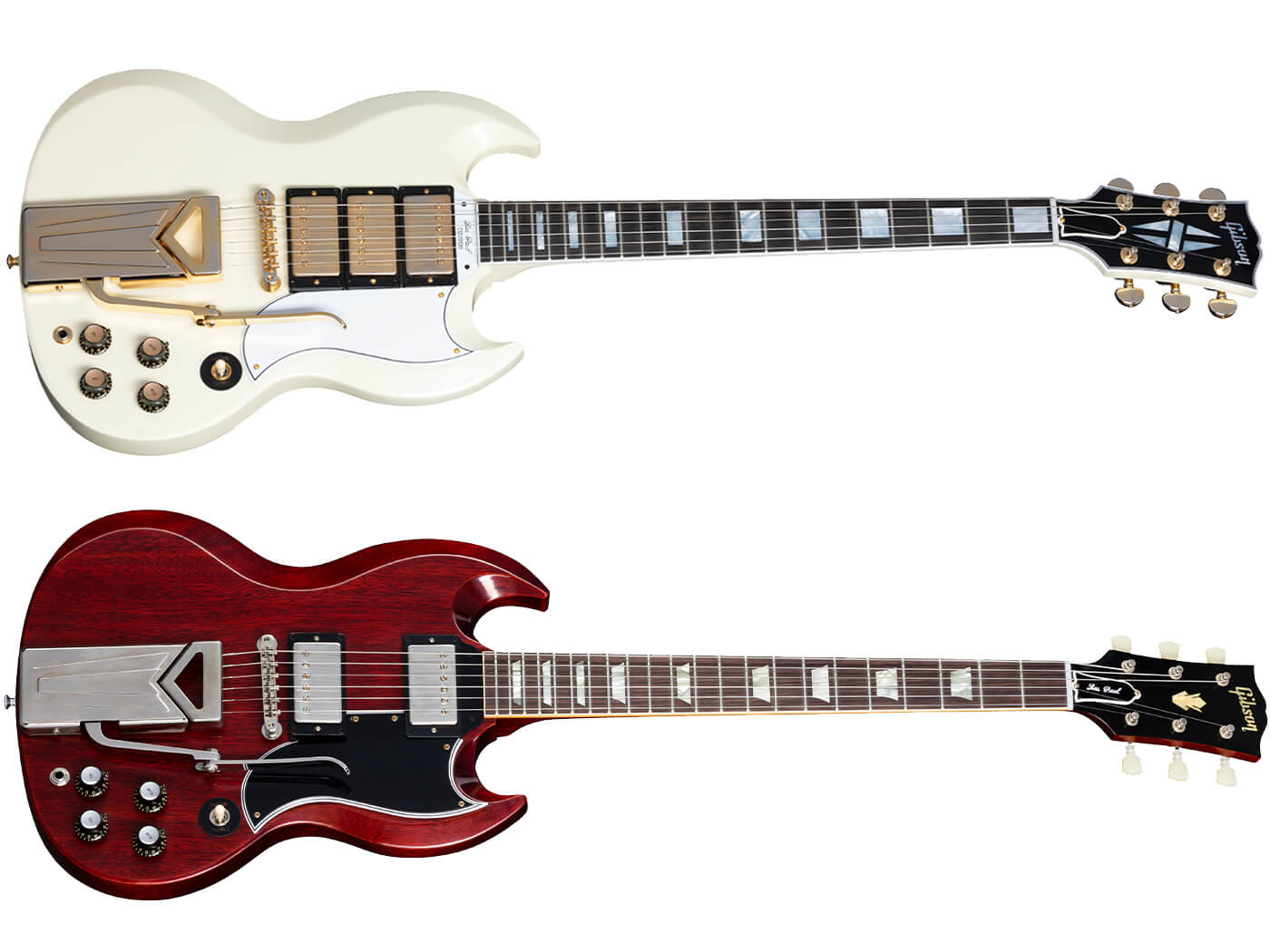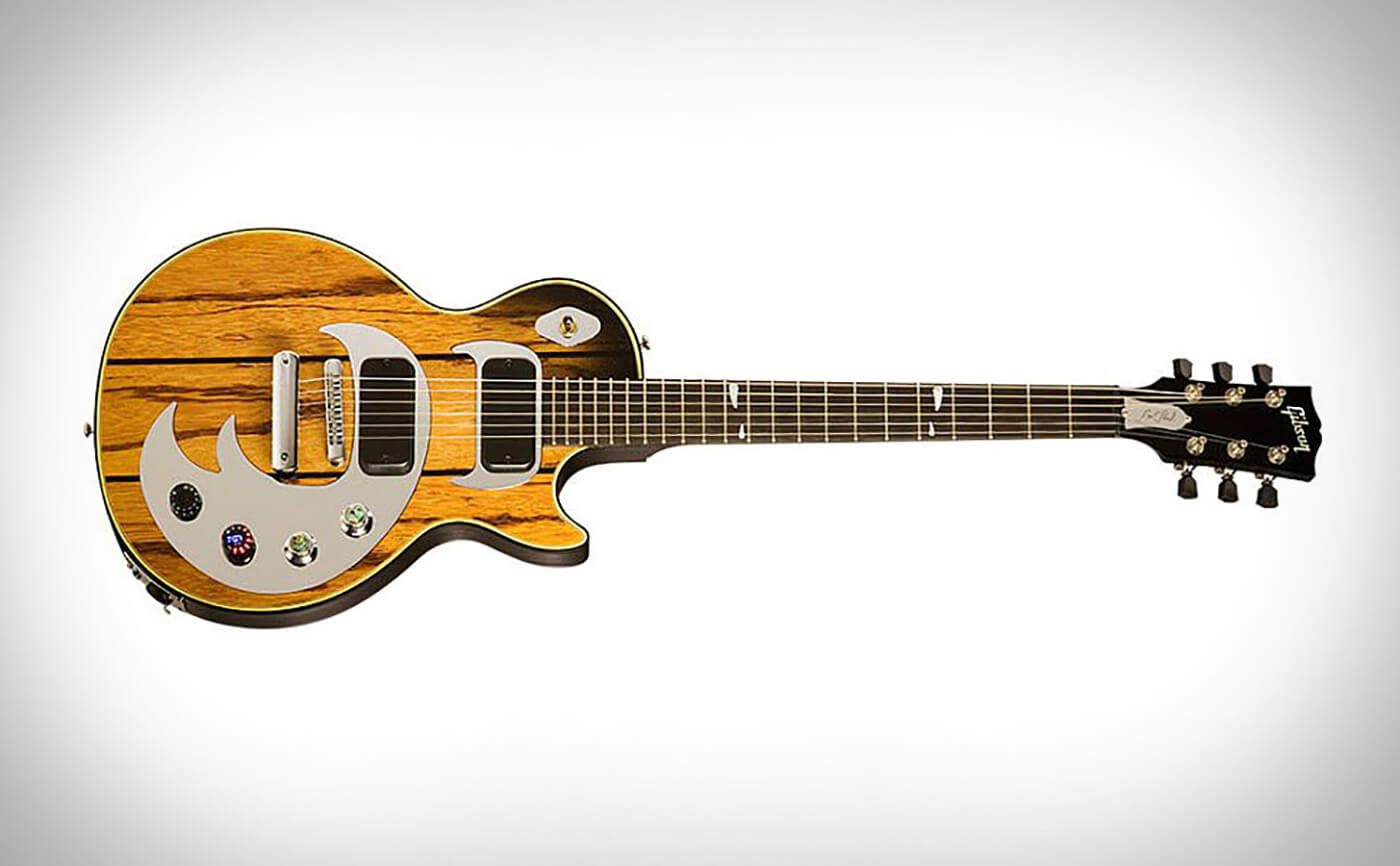Related Tags
A brief history of Gibson
It’s one of the oldest guitar makers still in existence, but the journey from Orville Gibson’s hobby to a world-straddling brand has been a rollercoaster to say the least.

Image: Daniel Knighton / Getty Images
In addition to being one of the world’s ‘big two’ electric guitar brands – along with Fender, whose fame and recognition have transcended the guitar sphere and become household names – Gibson is also one of the oldest American musical instrument manufacturers, with a history dating all the way back to 1894.
In the century or so since, the brand has changed dramatically, evolving with the times and adapting to changes in music, establishing a global reputation for innovation and quality. It’s not all been smooth sailing, and there’s certainly been some times when the brand has found itself in hot water, but it endures today as an icon of American culture.
It all began in Kalamazoo
As renowned as Gibson has become, it��’s hard to imagine that it all started as Orville Gibson’s part-time hobby! He worked a variety of part-time jobs in order to fund his true passion – handcrafting musical instruments.
Orville began building acoustic guitars and mandolins in his Kalamazoo, Michigan shop in 1894. He pioneered a guitar design that featured a carved, hollow top with an oval sound hole that would become the standard for the archtop guitar. It didn’t take long for demand of his handcrafted creations to take off and so in 1902 he secured the financing to form the Gibson Mandolin-Guitar Manufacturing Company.
Sadly, he would pass away in 1918 without being able to see much of the success his namesake company would come to have.
The roaring 20s and Gibson’s first electric guitar

Guitar innovation was really starting to take off in the 1920s, and Gibson led the charge. Employee Tedd McHugh created two of their greatest engineering achievements – the adjustable truss rod and height-adjustable bridge. Even today, all Gibsons are equipped with the same truss rod McHugh designed.
1935 saw the company release their first attempt at one of the newfangled electric guitars that people were talking about – the EH-150. This was far from the electrics we know today of course, as like many early electrified instruments, it was a lap steel guitar with a Hawaiian flair. The first “electric Spanish” model, the ES-150, followed the next year, and that was a lot more like it, but despite electric guitars being the next big thing, Gibson continued to focus on quality acoustic instruments.
One of the most enduring of these came about due to a custom order for a large acoustic guitar from popular western actor Ray Whitley, the Super Jumbo J-200 “King of the Flat Tops” was born in 1937. Still popular today under the model J-200/JS-200, it is still one of the premier choices for big-bodied acoustic guitars.
Gibson was a trailblazer in acoustic guitar design, developing such storied models as the J-45 and the Southern Jumbo, which remain iconic body shapes to this day. If that wasn’t enough, the company would change the fortunes of dusty end players forever when the cutaway was developed in 1939. With the innovation allowing never-before-seen upper-fret access for the jazz and blues cats of the day, the concept soon caught on, and through its empowerment of players, would change guitar playing forever.
As World War II neared its end, Gibson was purchased by the Chicago Musical Instrument Company in 1944, with the expectation that demand for guitars would hit an all-time high – they were not wrong, and the following decades would be boom years for Gibson, wherein the brand’s most iconic instruments would be created.
In 1950, a man named Ted McCarty took over the presidency of Gibson, and under his stewardship Gibson became a dynamo of innovation, developing the P-90 pickup, the ES-175, the first triple pickup electric guitar, the ES-5. But all this innovation would be merely a springboard to what came next
Les, Ted and the future

In 1952 Gibson partnered with the most renowned recording artist of the time, a jazz guitarist and recording pioneer named Les Paul to release a signature guitar. In truth, the pair had history – a wildly innovative polymath, the man otherwise known as Lester Polsfuss had come to McCarty in the 40s with an idea for a solidbody guitar he called ‘The Log’. McCarty rejected The Log, which was something of a Heath Robinson construction in fairness, but by the early 1950s Gibson had a problem – Leo Fender.
The former radio repairman had begun mass-producing the Esquire in 1948, and it was soon joined by the Broadcaster – clearly this solidbody thing was more than just a joke, and Gibson needed to compete. So, in 1951 McCarty and Paul finally teamed up to begin work on their own solidbody, a single-cut design that would bear the guitarist’s name on the headstock – the Gibson Les Paul.
In truth, it wasn’t a smash hit design out of the gate, but the fundamentals of what would become one of the two most iconic electric guitars ever made were there – single-cut mahogany body, arched maple top painted in eye-catching gold, twin pickups (P-90s initially) with four controls and a three way toggle, set mahogany neck with a rosewood bridge, and a three-a-side headstock that bore Les’s signature.
There were issues – the trapeze bridge and tailpiece, when combined with the guitar’s shallow neck pitch, made it a playability nightmare, and it would be two full years before the more plush, high-end Custom version arrived with its gold hardware and black finish.
But Gibson soon set to work fixing the issues – in 1954 McCarty invented the tune-o-matic bridge, which remains standard issue on most Gibson guitars today thanks to its rock solid stability, great tone and ability to individually adjust the saddles for intonation.
The issue of noise on the otherwise well-liked P-90 was also solved in 1957 with Seth Lovers invention of the humbucker. The humbucker remains one of the defining inventions in the history of rock ‘n’ roll, stacking two single coil pickups together with reversed polarities removed the dreaded ’60-cycle hum’, and opened the door for so much more.
1957 also saw Gibson acquire the Epiphone brand – the New York company had been a huge rival of Gibson in the 1930s, but fell on hard times and was bought over to Kalamazoo to serve as Gibson’s budget line. That wouldn’t be the end of Epi’s story however – the brand produced some iconic instruments of its own in the 1960s, including the Casino, Sheraton, Coronet, Texan and Frontier.
The Golden Age arrives

It’s hard to firmly state when Gibson guitars entered their golden age, but there’s perhaps no more hallowed period in the history of any guitar company than the instrument made in Kalamazoo between 1958 and 1960.
For starters, 1958 saw the arrival of the world’s first commercial semi-hollow guitar – the ES-335. If there’s a guitar that’s almost as important to popular music as the Les Paul in Gibson’s canon, it’s this wonderfully versatile, expressive and reliable instrument – blending the warmth and organic sound of a jazzbox with the feedback-reducing properties of a solidbody, it remains an icon to this day.
1958 also saw the arrival of perhaps the single most revered electric guitar ever, the original Les Paul Standard. Priced between the Goldtop and the Custom, the Standard utilized all the learning Gibson had made in the previous six years, sporting a pair of Seth Lovers new humbuckers (Patent Applied For), the tune-o-matic bridge, and a new and eye-catching Sunburst finish.
In total, around 1,700 Bursts, as they’d come to be known, were built between 1958 and 1960 – and are today regarded by many as the finest electric guitars ever made. The guitar playing public at the time were less impressed, however, and poor sales led to the Les Paul design being retired in 1960.
In truth, kids in the late 50s wanted guitars that looked a little more futuristic than Gibson’s archtop-derived instruments, and you can’t say Ted McCarty wasn’t prepared to give them what they wanted – in 1958 he designed the Flying V, Explorer and Moderne, all of which had radical, futuristic designs… and the public promptly hated them too. The Moderne would never even make it into full production in the 50s, while the V and Explorer shipped a few hundred units before being retired. Like the Les Paul Burst, the V and Explorer would have to wait to be fully appreciated.
Swinging 60s

By 1960 Les Paul sales were flagging, and so Gibson decided the design needed a radical overhaul – gone was the single-cut arched top design of yore and in came a thin, contoured solidbody design with two pointed horns to enable even better upper fret access. It was far from what Les and Gibson had designed a decade hence, but there was one problem – they didn’t tell him they were doing it.
Sales of this radical Les Paul design were strong when it was launched in 1961, but the man whose name was on the headstock absolutely hated the design. He asked for his name to be taken off the guitar, despite the $1 per guitar royalty it earned him, and by 1963 the Les Paul had become the SG.
The next few years would see Gibson and Epiphone go from strength to strength, with 100,000 guitars were shipped in 1965! It wasn’t all roses however, the Firebird, launched in 1963, struggled to catch on in either its reverse or non-reverse forms, and in 1966 McCarty left Gibson after overseeing unprecedented growth and success.
Brewers, Norlin, Henry

The post-McCarty era would prove difficult for Gibson. In 1969 the brand’s parent company, Chicago Musical Instruments, was sold to a South American brewing conglomerate, and then in 1974 Gibson was broken off and became part of Norlin Industries.
The Norlin era would become synonomous with corporate mismanagement, and a decline in quality of Gibson’s instruments (a fact that, ironically, would drive many of the 70s guitar icons to reappraise several Gibson flops from the 50s and 60s, including the Les Paul, Firebird, Flying V and Explorer.
In 1974, Gibson opened a second facility in Nashville in 1974 and for years split production between Tennessee and Michigan, whiel gradually moving its focal point to the music city.
In 1983, Gibson would leave Kalamazoo behind for good, leaving behind a few of the luthiers who didn’t want to move, and an empty factory – these luthiers would go on to found Heritage guitars in that same factory.
By 1986, Gibson was effectively bankrupt – struggling to keep pace with the demands of 80s shred guitarists. That same year, the company was purchased for $5 million by David Berryman and new CEO Henry Juszkiewicz. The mission was simple – restore Gibson’s name and reputation to what it once was. Quality control picked up significantly. A focus was put on acquiring other companies, and in-depth analysis of which models were the most popular and why in an effort to replicate it. This strategy would lead to a gradual resurgence, helped in no small part by a chap by the name of Slash making Sunburst Les Paul’s the ultimate in guitar cool again in 1987.
Gibson in the modern era

The Juskiewicz era of Gibson has become much-maligned in recent years, but things were not always bad, and the first few decades saw a significant uptick in quality and giving fans the guitars they really wanted.
By the turn of the Millennium, however, things were starting to get a little strange. Gibson had always been a company that placed innovation and forward thinking at its heart, but gradually the company began to move in a direction that alienated it from its audience.
Gibson began buying up smaller companies such as Baldwin, Steinberger, Kramer and many others in the 90s, but by the early 2000s it became clear that Gibson wanted to give the guitar world the future, if it was ready for it or not.
In 2005 the Robot Les Paul featured polarising but hugely innovative robotic tuners that could tune a guitar at the press of a button. From there Gibson continued to push ever on with its goal of melding modern technology with the electric guitar – leading to such calamitous launches as the Dusk Tiger and the Firebird-X.
Perhaps the biggest disconnect between Gibson and its audience came in 2015, when the entire Gibson range was overhauled to include wider necks, an adjustable brass nut with zero fret and the G-Force robot tuners as standard. The reaction was almost universally negative – fans complained that Gibson was trying to force change onto them instead of just offering them the guitars they wanted.
Gibson’s reputation took a hammering over the 2010s, and by 2018 the company was in dire financial straits. Chapter 11 banruptcy was filed in May that year.
Firebird from the ashes

Gibson was rescused from oblivion by hedge fund KKR and quickly went about installing a new leadership team, removing Juskiewicz and bringing the company under the stewardship of ex-Levis man JC Curleigh.
While the following years have not been smooth, with Gibson repeatedly being on the end of negative publicity regarding its aggressive attitudes towards its trademarks and other guitar makers, the reborn Gibson has got far more right than wrong.
From overhauling the production range to better reflect the iconic designs of years past with the Original Collection, to creating a new and improved Custom Shop Lab headed up by Tom Murphy, to overhauling and improving Epiphone guitars so they’re more in line with their Gibson inspirations, the future of Gibson appears to be in very safe hands.
For more features, click here.
